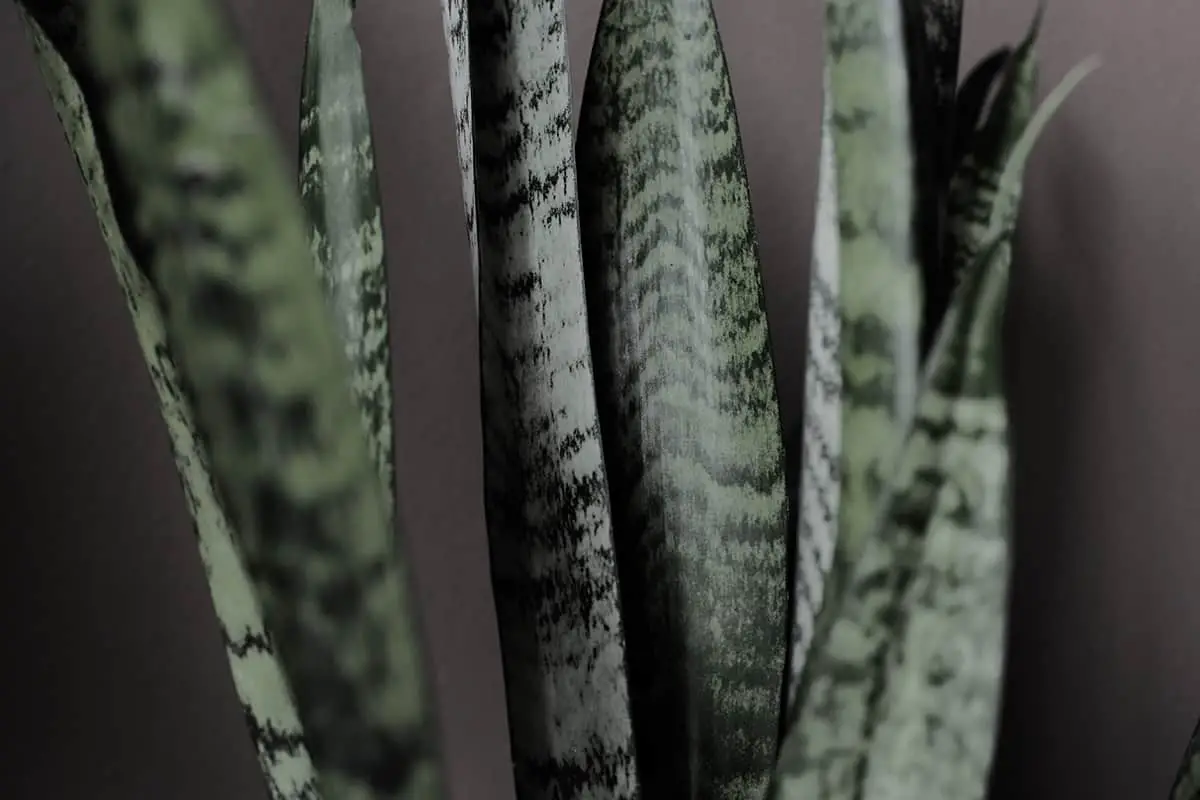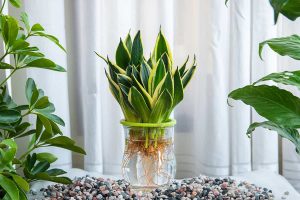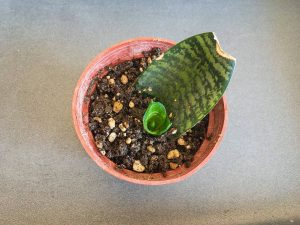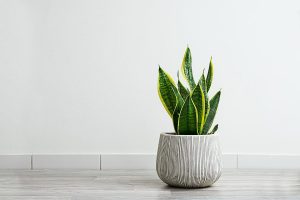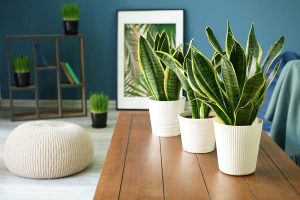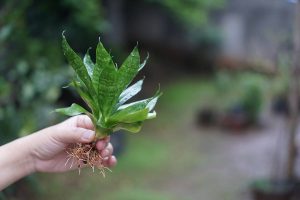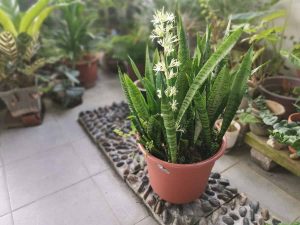The Black Coral Snake Plant is a variety of the more common snake plant, popularly grown as a houseplant. It is an evergreen succulent that produces dense clumps of foliage, growing in upward-facing rosettes. It features dark green foliage, which appears black in low lighting, hence its name, along with zigzag banding in a bright green color.
It is native to West Africa, where it grows along the sides of roads like a weed, as well as in rainforests. Here we look at the best ways to take care of the Black Coral Snake Plant, both as a houseplant and outdoor plant.
| Botanical name: | Sansevieria trifasciata Black Coral |
| Common names: | Mother-in-Law’s Tongue, Snake Plant, Saint George’s Sword, Viper’s Bowstring Hemp |
| Plant family: | Asparagaceae |
| USDA hardiness zone: | 9- 11 |
| Mature height: | 3 feet |
| Mature spread: | 2 to 3 feet |
Table of Contents
Varieties of Black Coral Snake Plant
The Black Coral Snake Plant is a variety of the species Sansevieria trifasciata. It is botanically known as Sansevieria trifasciata Black Coral. There are several other varieties of Sansevieria trifasciata, some of which we will cover here.
Sansevieria trifasciata Laurentii
This is the classic snake plant that most people will imagine when they think of a snake plant. It has dark green stiff yet fleshy foliage with yellow margins and an upright habit that sends sword-shaped leaves vertically. This is the variety of snake plant which is most widely grown as a houseplant. It is easy to care for and can reach heights of between 5 and 6 feet when grown indoors.
Sansevieria trifasciata Futura Superba
This is a close relative of the Sansevieria trifasciata Laurentii, and you would be forgiven for mistaking them for the same plant. The difference lies in the size of the leaves; the Sansevieria trifasciata Futura Superba foliage is much broader and shorter, giving the entire plant a chunky and sturdy look. This is a great variety of snake plants if you like the look of Sansevieria trifasciata Laurentii but don’t have enough space to house it because this plant will reach a maximum height of just 2 feet.
Sansevieria trifasciata Hahnii
This snake plant is known as the Bird’s Nest Snake Plant because of the way its leaves are arranged. They grow in a dense rosette, with the foliage splaying out and curving to create a funnel shape that looks similar to a bird’s nest. This is a small variety of snake plant which typically grows to 8 inches in height, though in exceptional circumstances, will reach 12 inches.
How to Care for Your Black Coral Snake Plant
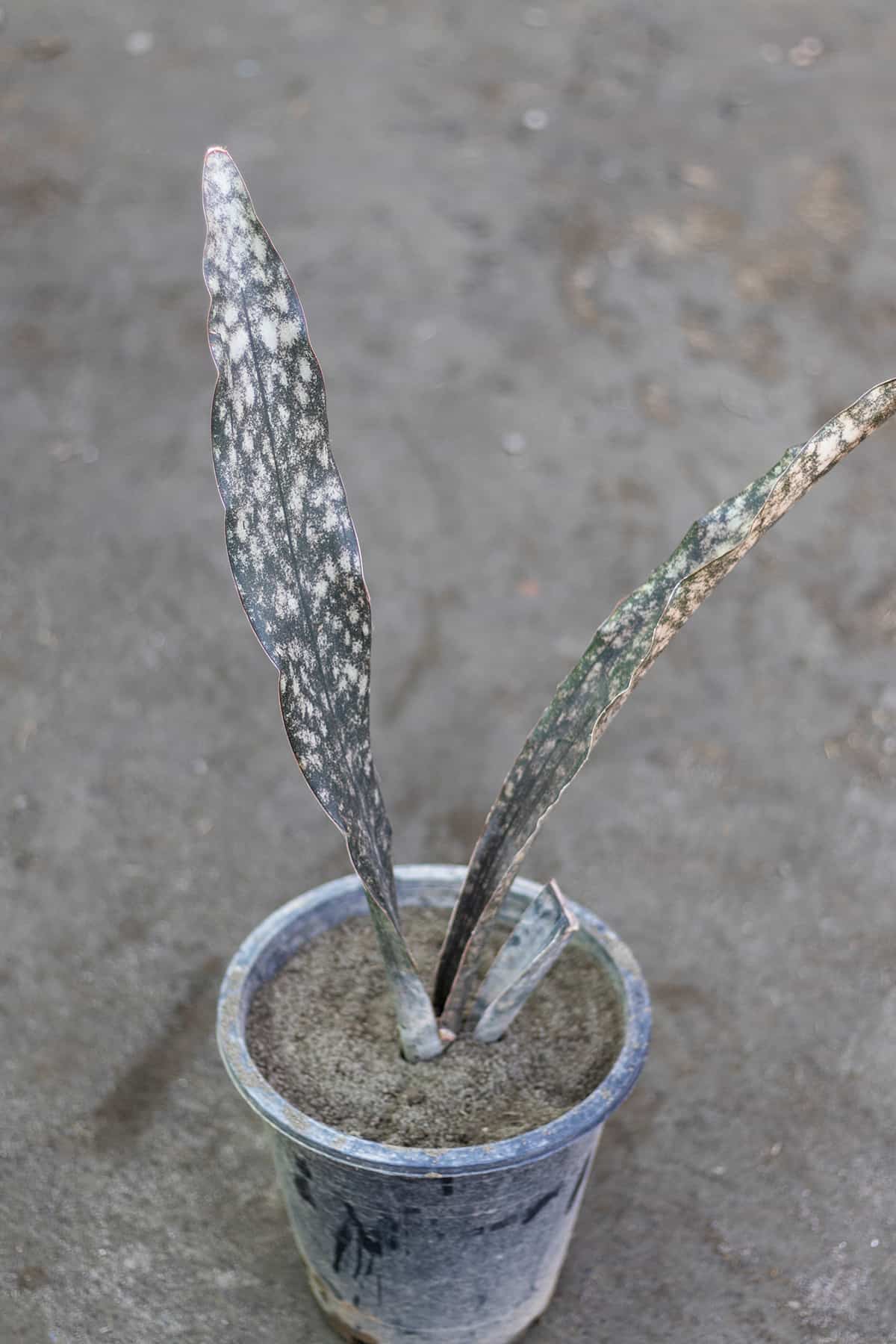
Caring for your Black Coral Snake Plant is easy with these helpful tips.
Light
The Black Coral Snake Plant is well known for tolerating low light levels, which means you can use it to decorate dark corners of your home. However, if you really want this houseplant to thrive, then it should be situated in a position of bright, indirect light. In their native habitat, Black Coral Snake Plants grow in the dappled shade of taller trees, as well as out in open spaces with no cover, so they are accustomed to receiving a mixture of direct light, indirect light, and shade.
Ideally, place your houseplant in an east or west-facing room, where sunlight will stream through in the morning or the early evening, avoiding the sunlight during the strongest part of the day. You could also put this plant in a southerly window if the light is filtered through blinds or sheer drapes. A good level of light is important for the Black Coral Snake Plant because the beautiful variegation will be most pronounced when the plant is receiving adequate sunlight.
Soil
Black Coral Snake Plants need to be grown in soil that is very well draining. Use a cacti or succulent mix of soil, or create your own mix by adding perlite to your regular houseplant soil. If you are growing your snake plant outside directly in the ground, you can improve drainage by mixing sand into your soil with a spade.
Water
The Black Coral Snake Plant is somewhat drought tolerant as a houseplant since it is a succulent that stores moisture in its leaves. The plant can go for several weeks without water during the height of summer, but typically you should expect to water it between once and twice a month during its growing period. Allow the top two inches of the soil to dry out between each watering, then give the plant a heavy soak until water seeps out of the drainage holes.
This plant will not tolerate being grown in wet soil, so you should always be careful not to overwater the Black Coral Snake plant. The dormant period is when this plant is most susceptible to root rot as a result of overwatering, so remember to dramatically cut your watering schedule in fall and winter. Throughout this period, let the entire soil of the plant dry out before you add more water. You can expect to water the plant approximately once every 6 to 8 weeks.
If you are growing the Black Coral Snake Plant outside directly in the soil, then you will find it is significantly more tolerant of drought compared with being kept indoors. This is because the roots are able to spread far and wide to find additional moisture, whereas a snake plant confined to a pot is restricted purely to the moisture the owner offers it.
Temperature
This plant is native to West Africa, where it is accustomed to being in hot temperatures throughout the year. This is one of the reasons the Black Coral Snake Plant performs so well as a houseplant because homes are also consistently warm throughout the year. You can grow this plant outdoors if you are in hardiness zones 9- 11, and it will grow happily all year round.
Outside of these zones, the climate is not well suited for growing the plant outdoors. However, you can move your Black Coral Snake Plant outside during the summer to help it thrive; just remember to bring it back inside well before the first frost.
Humidity
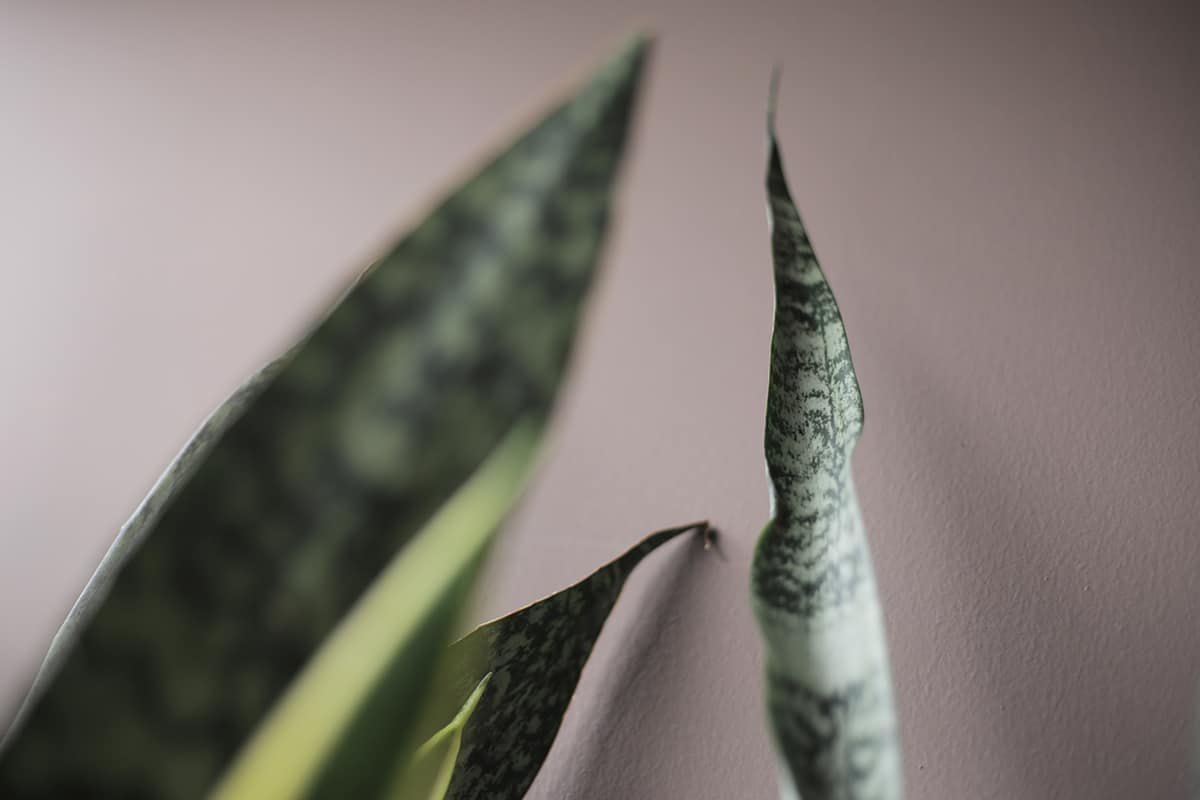
Black Coral Snake Plants enjoy moderately high levels of humidity, but this is not essential to their survival. If you enjoy tending to your houseplants, then, by all means, spritz the snake plant with a water spray or set it up with a pebble tray to increase the moisture in the air. However, if you prefer low-maintenance plants, then the Black Coral Snake Plant is a good choice since it will survive in any level of humidity.
Fertilizer
Snake plants do not require fertilizer to survive, but if you are trying to make your snake plant grow faster or you want to ensure it is in optimal condition, then feeding it with fertilizer can help.
Use a fertilizer designed for houseplants according to the instructions, or use your regular garden liquid fertilizer at half the usual concentration, approximately every four weeks throughout the growing season. Do not fertilize the Black Coral Snake Plant during fall and winter because it needs to rest during this time.
Black Coral Snake Plant FAQs
Can Black Coral Snake Plants live outside?
Yes, Black Coral Snake Plants can live outside all year round in appropriate climates, or it can be moved outside during the summer when grown as a houseplant. USDA hardiness zones 9-11 are suitable for growing Black Coral Snakeplants outside.
Are Black Coral Snake Plants easy to grow?
Like other varieties of snake plants, the Black Coral Snake Plant is incredibly easy to grow. It doesn’t require much attention in terms of water and humidity, and it will even survive in a range of lighting. This is a plant that thrives on neglect, and therefore it is ideal for people who usually don’t have much luck with their plants.
Are Black Coral Snake Plants resistant to pests?
Black Coral Snake Plants are somewhat resistant to pests simply because most pests have a hard time breaking through the tough outer layer of the leaves. It is unusual for these types of plants to suffer from pest infestations, however, it is not impossible, so always routinely check your plant over if it is displaying any unusual symptoms such as foliage discoloration.
Are Black Coral Snake Plants Indestructible?
Some sources claim that the Black Coral Snake Plant is the best plant for beginners because it is practically indestructible, but this is simply not true. The plant is very easy to care for; however, if you inadvertently treat it inappropriately, then it can die. The most common way to kill this plant is by overwatering it, which will lead to root rot.
Root rot destroys the root system, which means that the plant is no longer able to absorb moisture and nutrients. The plant will effectively be starved to death. There are a variety of ways to prevent this, including proper drainage and attentive watering.
